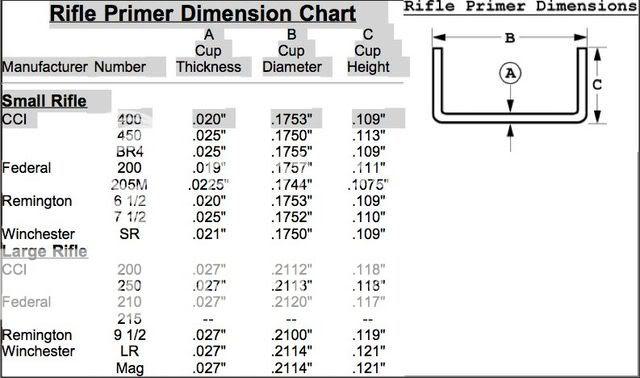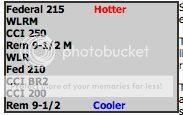"just another tool to check est. pressure, sure tells you if your on the outer edge of safe."
No, it doesn't, and that's my point.
Bart's experience with proof loads supports what I'm saying - primers do NOT automatically tell us much of anything about pressure. Our pressures may be quite modest and still produce very flat primers to frighten us. OR the pressure can be quite high but the primers look near normal and give us a dangerous false sense of security; that's the part that worries me when I read so many guys suggesting it is a viable pressure indicator. I'm not saying to pay no attention to fired primers, they can tell us a lot, but not much of it's directly related to chamber pressure.
Larry, you are correct that 'we' have been 'using' primers to indicate pressure for a very long time BUT in recent decades we have been kidding ourselves. Primer reading started when they all had domed - concave - tops so flattening actually meant something that our modern already flat-topped primers don't show very well. Anyone who uses your excellant Innovative Tech dial indicator case headspace tool, etc, to measure and match fired and sized shoulder locations will see very little primer flattening because they won't be able to back out of the case enough to squish flat when the case head pushes back to the breech.
A chorongraph is no pressure gage but we can be quite sure that if a given bullet weight over a specific quanity of a given powder is going much faster for us than it did for our book makers we are producing a higher pressure than the bookies got. IF that's worth being concerned about.


!!


